Abstract
We examined the effect of leucomycins, leucomycin derivatives, and other 16-membered macrolides (tylosin, niddamycin, spiramycin I, and spiramycin III) on [14C]erythromycin binding to ribosomes. Results of these studies enabled determination of the association and dissociation constants for the binding of each of these compounds to Escherichia coli ribosomes. In addition, the binding of the leucomycins and the leucomycin derivatives to ribosomes in general correlated with their antimicrobial activity.
Full text
PDF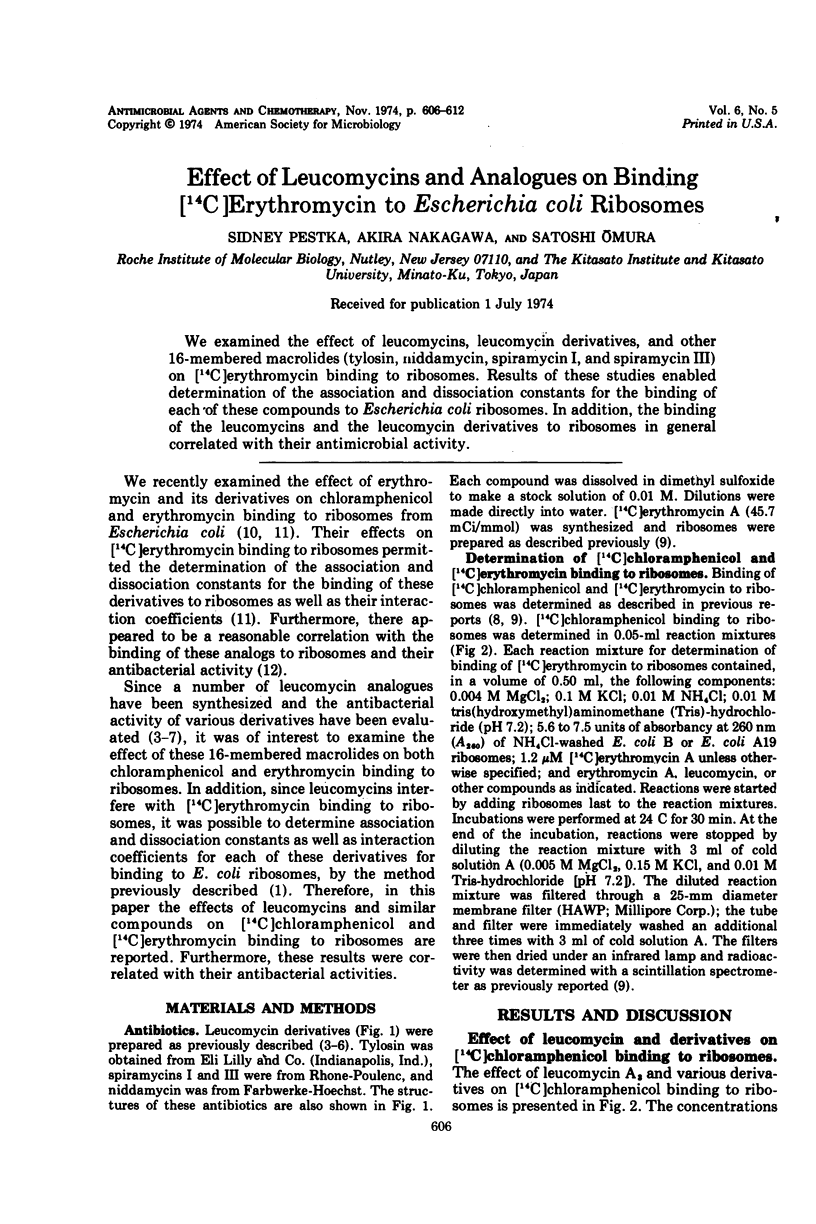
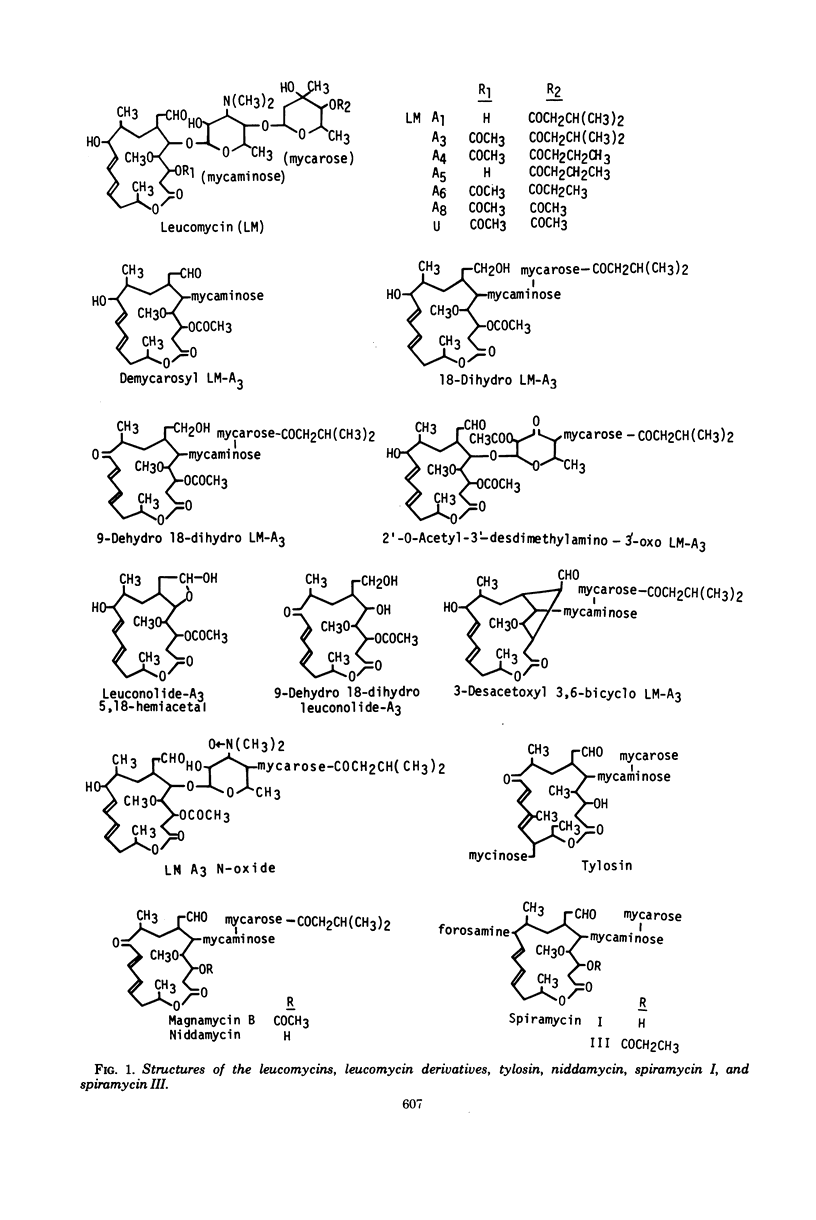
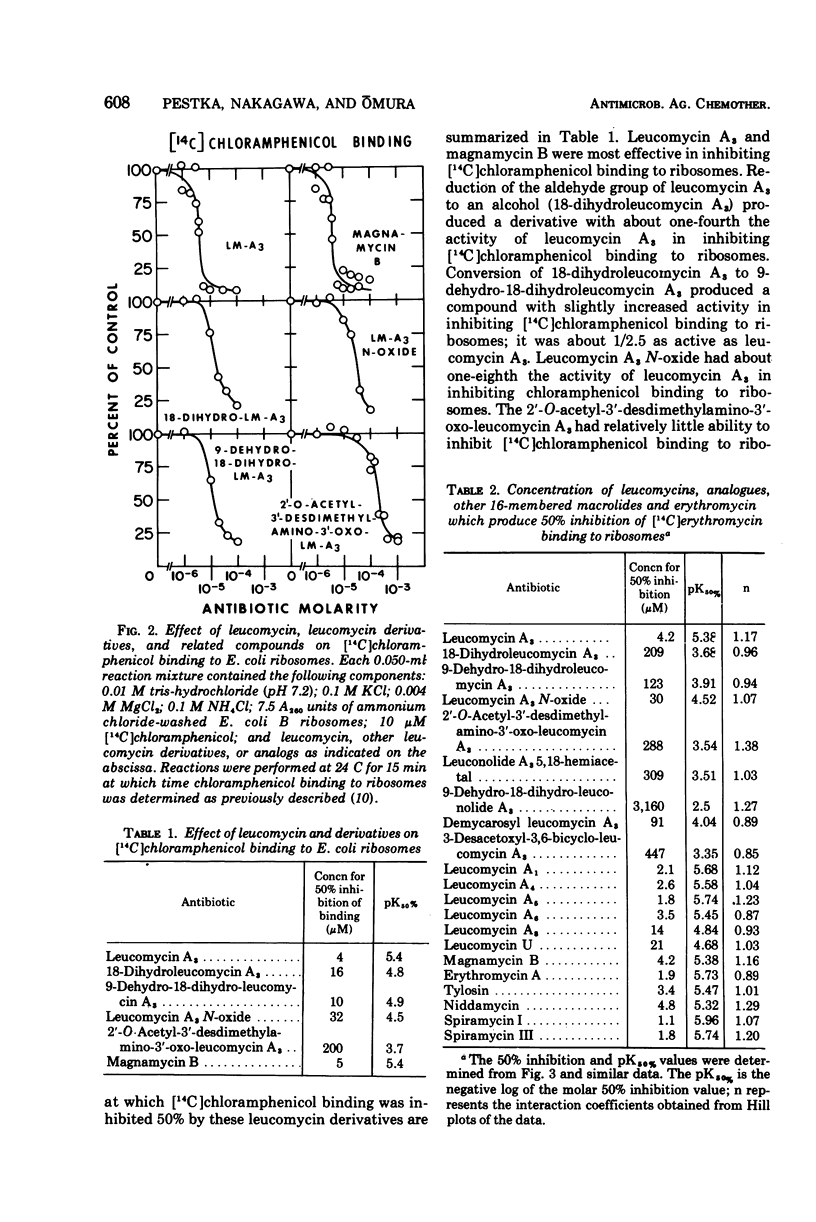
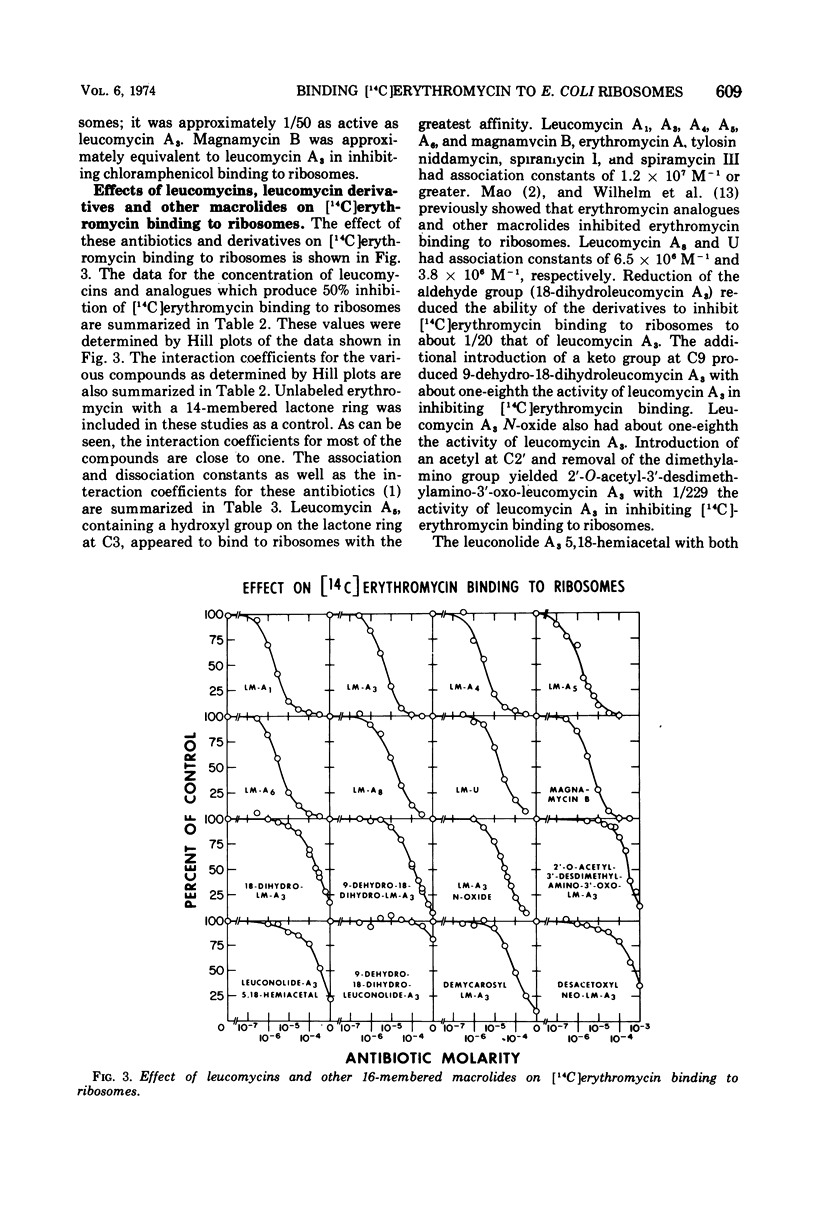
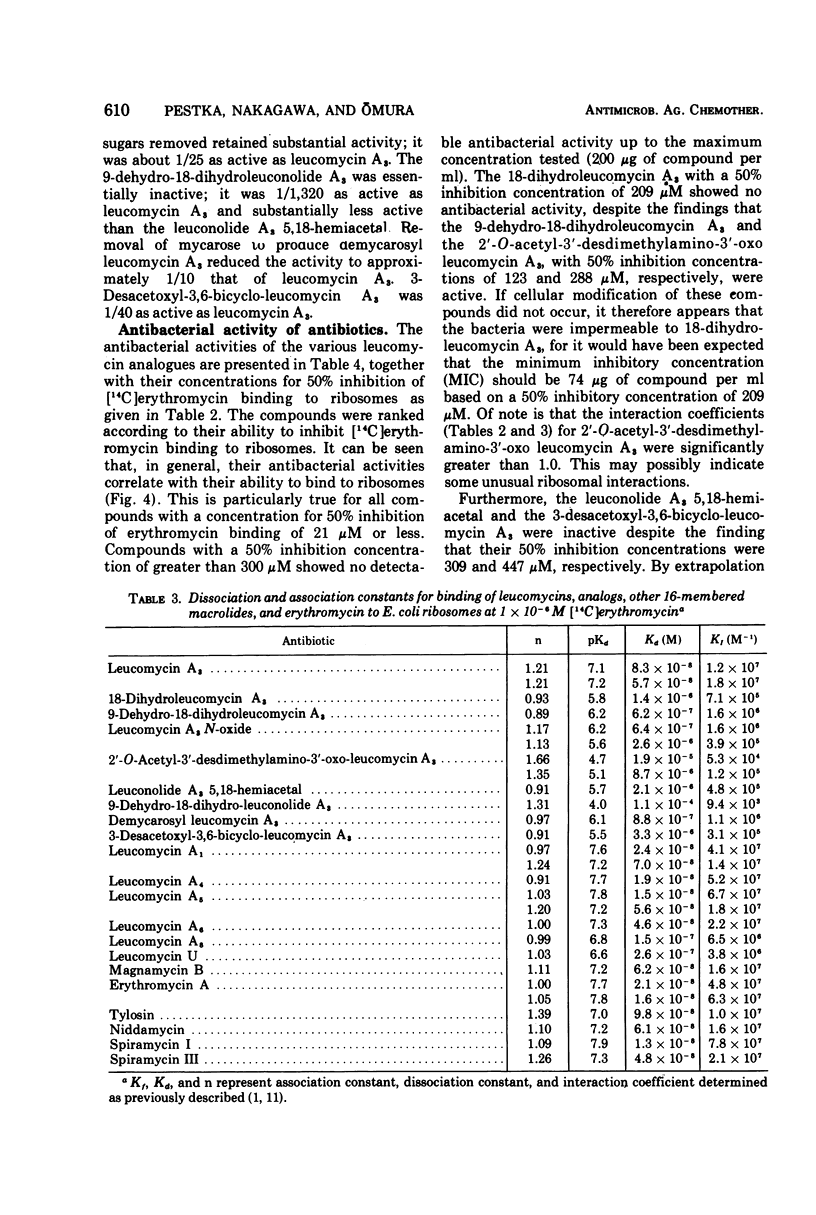
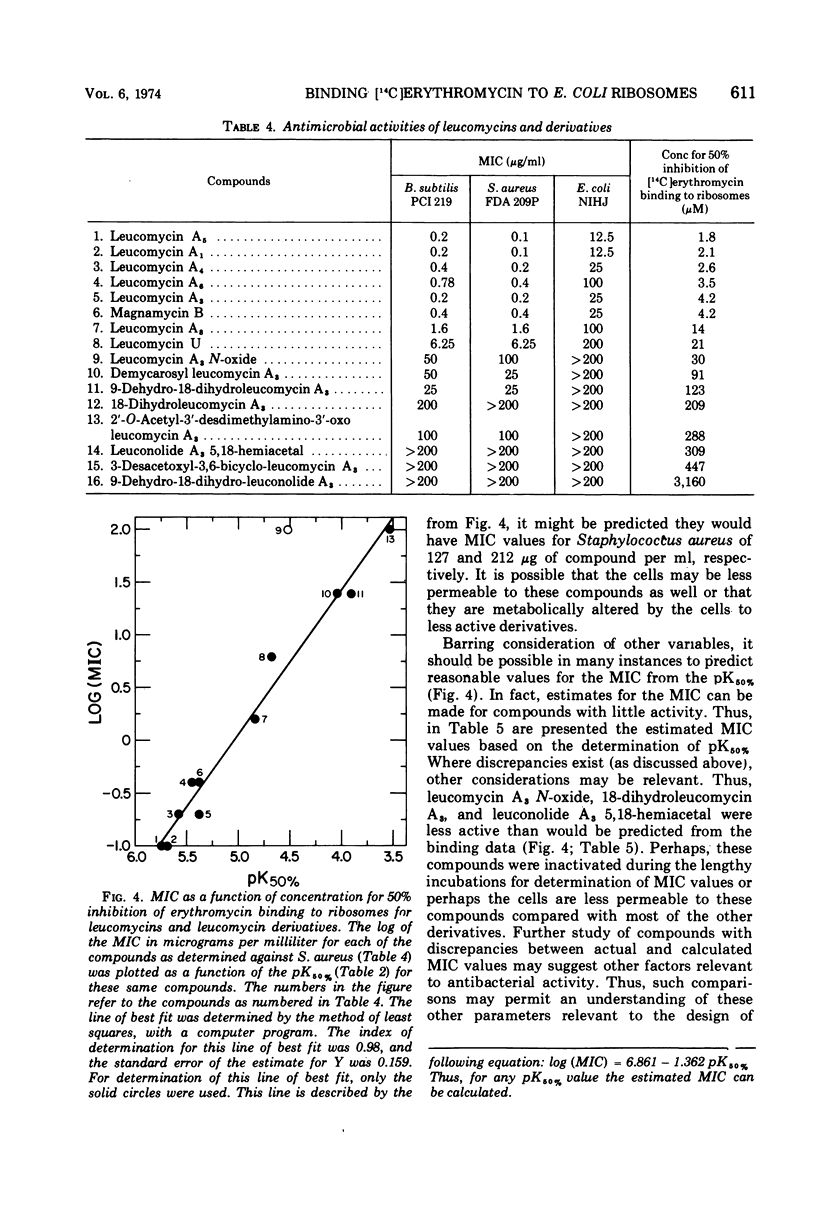
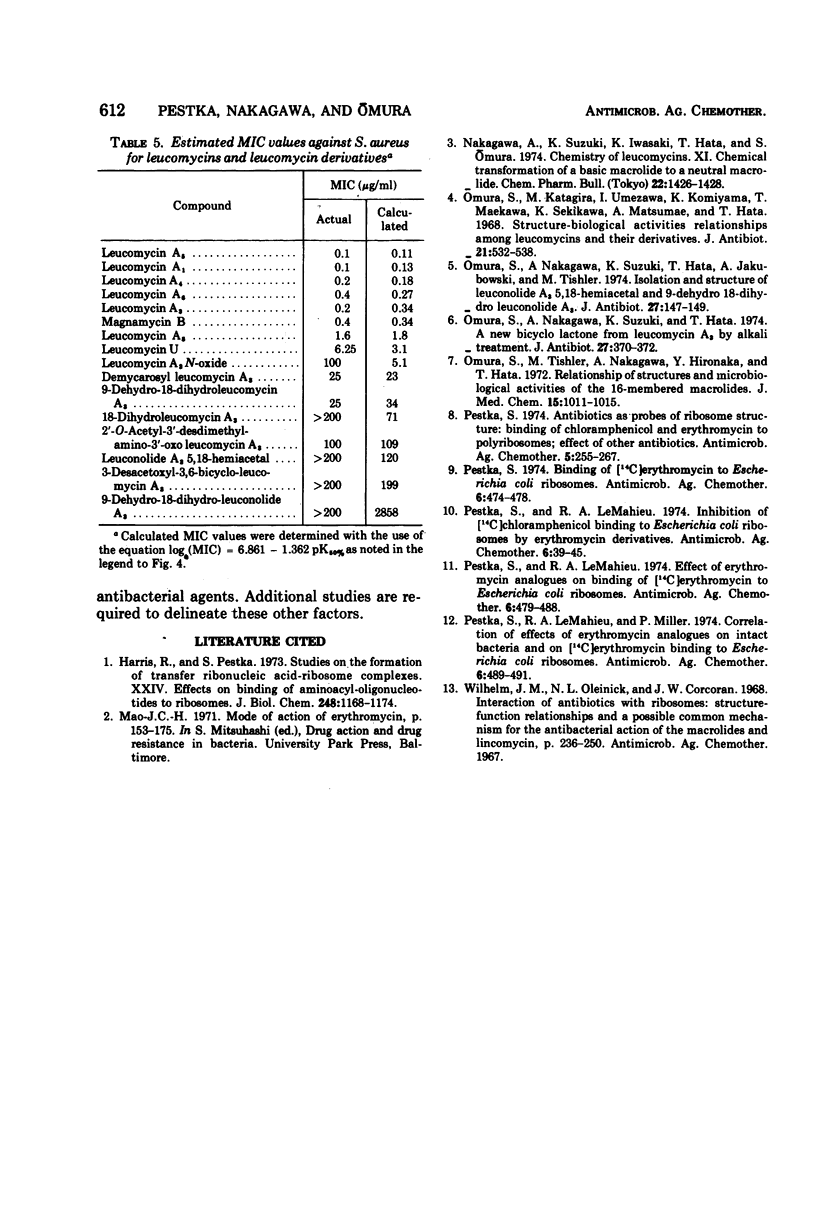
Selected References
These references are in PubMed. This may not be the complete list of references from this article.
- Harris R., Pestka S. Studies on the formation of transfer ribonucleic acid-ribosome complexes. XXIV. Effects of antibiotics on binding of aminoacyl-oligonucleotides to ribosomes. J Biol Chem. 1973 Feb 25;248(4):1168–1174. [PubMed] [Google Scholar]
- Omura S., Makagawa A., Suzuki K., Hata T. Letter: A new bicyclo lactone from leukomycin-A3 by alkali treatment. J Antibiot (Tokyo) 1974 May;27(5):370–372. doi: 10.7164/antibiotics.27.370. [DOI] [PubMed] [Google Scholar]
- Omura S., Nakagawa A., Suzuki K., Hata T., Jakubowski A. Letter: Isolation and structure of leuconolide-A3 5, 18-hemiacetal and 9-dehydro-18-dihydroleuconolide-A3. J Antibiot (Tokyo) 1974 Feb;27(2):147–149. doi: 10.7164/antibiotics.27.147. [DOI] [PubMed] [Google Scholar]
- Omura S., Tishler M. Relationship of structures and microbiological activities of the 16-membered macrolides. J Med Chem. 1972 Oct;15(10):1011–1015. doi: 10.1021/jm00280a003. [DOI] [PubMed] [Google Scholar]
- Pestka S. Antibiotics as probes of ribosome structure: binding of chloramphenicol and erythromycin to polyribosomes; effect of other antibiotics. Antimicrob Agents Chemother. 1974 Mar;5(3):255–267. doi: 10.1128/aac.5.3.255. [DOI] [PMC free article] [PubMed] [Google Scholar]
- Pestka S. Binding of [14C]erythromycin to Escherichia coli ribosomes. Antimicrob Agents Chemother. 1974 Oct;6(4):474–478. doi: 10.1128/aac.6.4.474. [DOI] [PMC free article] [PubMed] [Google Scholar]
- Pestka S., LeMahieu R. A. Inhibition of [14C]chloramphenicol binding to Escherichia coli ribosomes by erythromycin derivatives. Antimicrob Agents Chemother. 1974 Jul;6(1):39–45. doi: 10.1128/aac.6.1.39. [DOI] [PMC free article] [PubMed] [Google Scholar]
- Pestka S., Lemahieu R. A. Effect of erythromycin analogues on binding of [14C]erythromycin to Escherichia coli ribosomes. Antimicrob Agents Chemother. 1974 Oct;6(4):479–488. doi: 10.1128/aac.6.4.479. [DOI] [PMC free article] [PubMed] [Google Scholar]
- Pestka S., Lemahieu R., Miller P. Correlation of effects of erythromycin analogues on intact bacteria and on [14C]erythromycin binding to Escherichia coli ribosomes. Antimicrob Agents Chemother. 1974 Oct;6(4):489–491. doi: 10.1128/aac.6.4.489. [DOI] [PMC free article] [PubMed] [Google Scholar]


